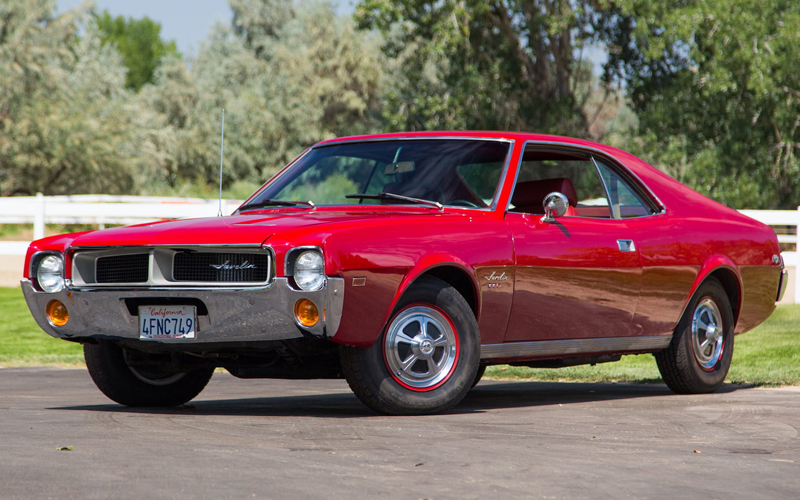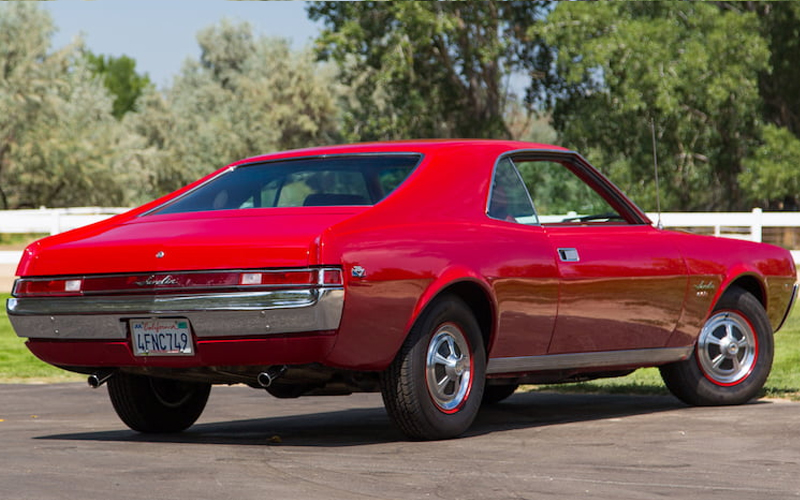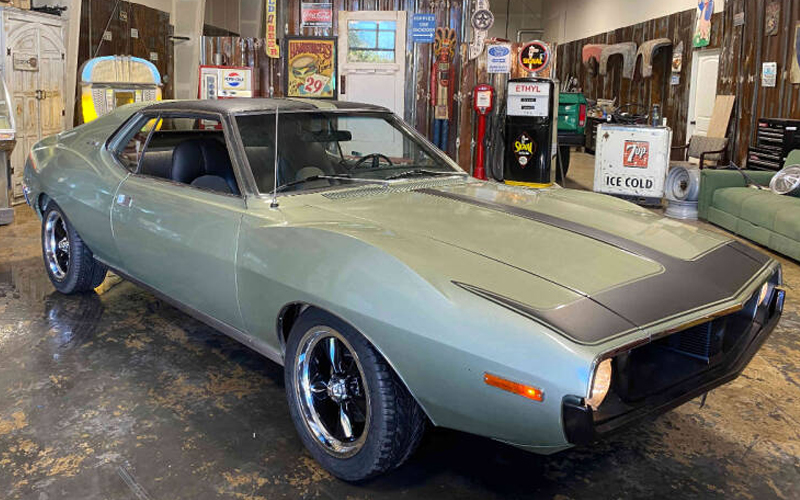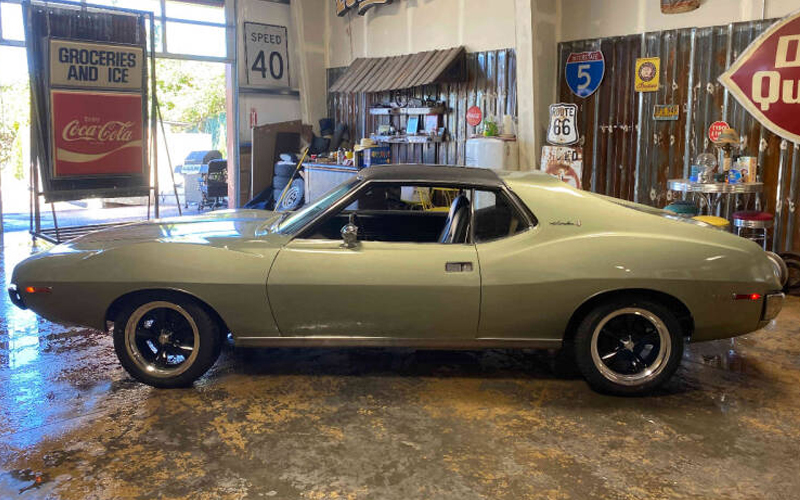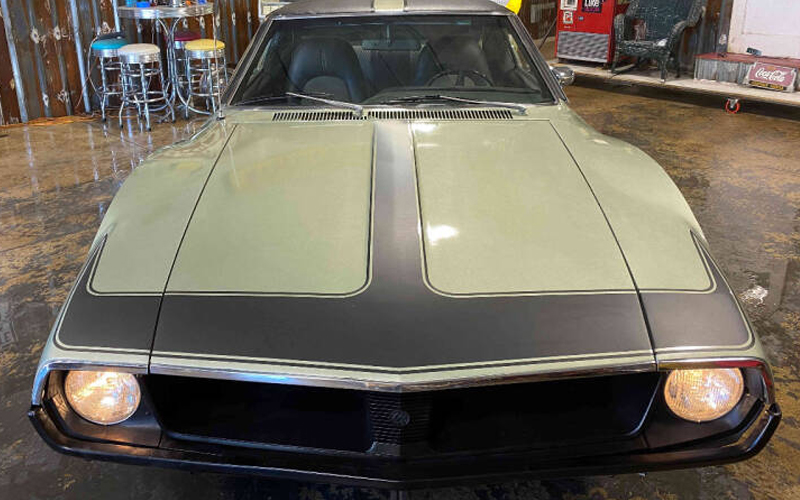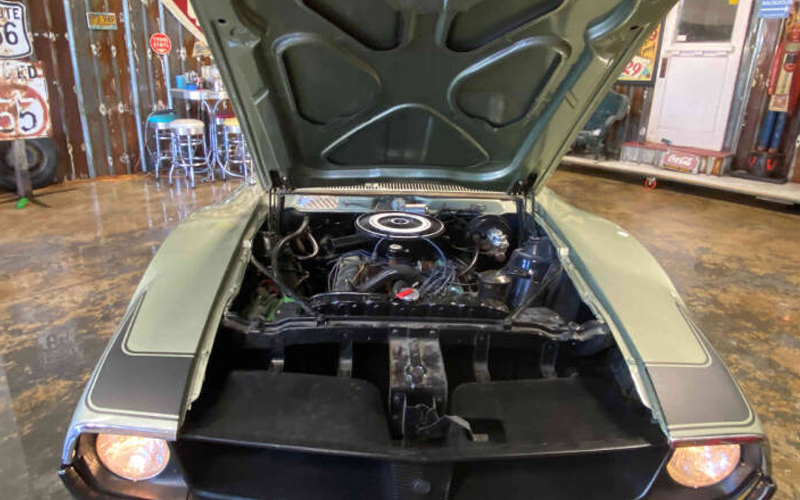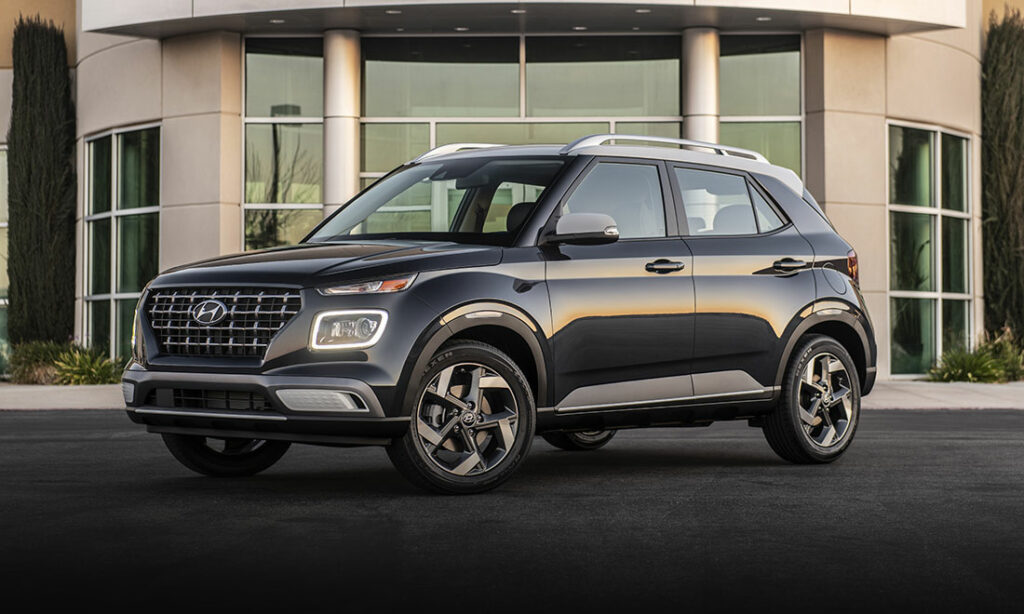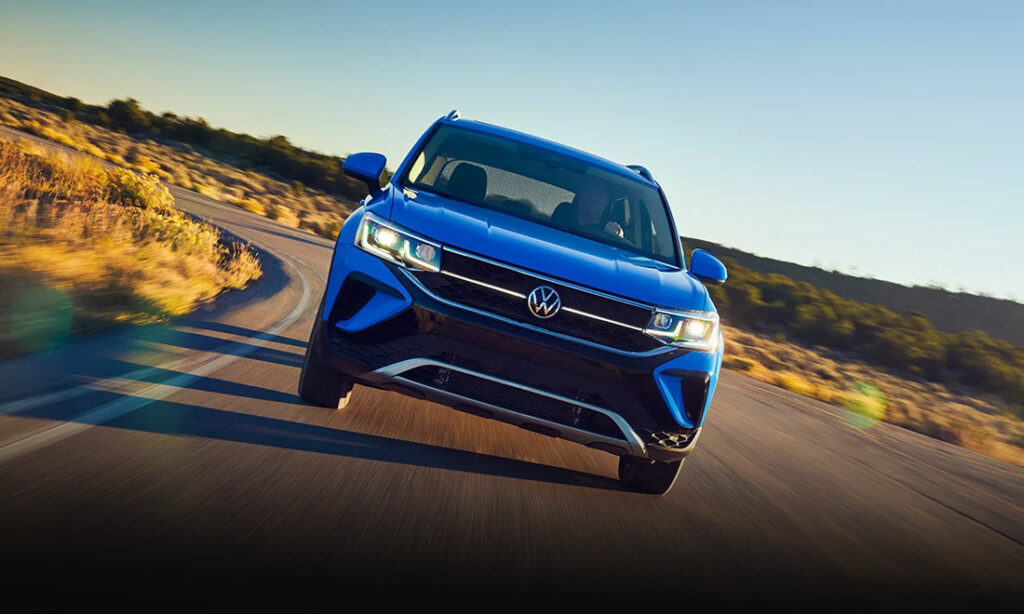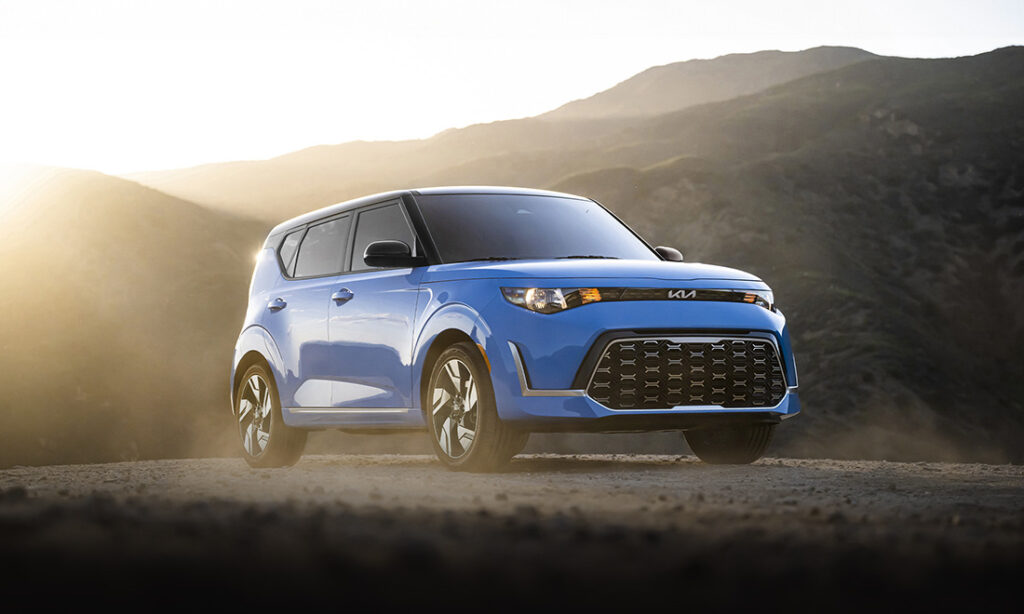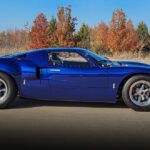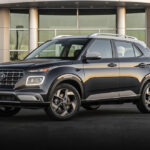Retro Review: AMC Javelin
In the seven years of its production, the AMC Javelin won racing championships and made a lasting impression on the muscle car market. So, what happened to AMC and their Javelin?
The Detroit Big Three vs The Kenosha One
The American auto market has been dominated by the Big Three – GM, Chrysler, and Ford for decades. Competition between these three Detroit companies has always been contentious and fiercely contested. The largest and longest running battle between them was ignited by the creation of the Ford Mustang. The pony car era brought us models like the Camaro, Challenger, Barracuda, and Firebird in response to the aforementioned Mustang. However, the Big Three weren’t the only ones showcasing their new muscle cars, there was a fourth entrant to the pony car world.
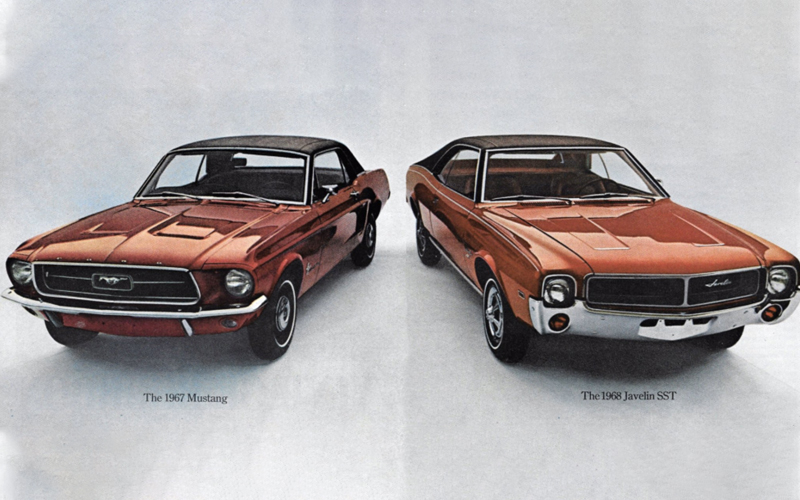
The American Motors Corporation (AMC) was a smaller automotive group focusing mainly on economy cars working across Lake Michigan in Kenosha, Wisconsin. AMC was ready to prove they could compete with the best of them, and in 1967 they unveiled their affordable, high-powered muscle car to the world. It would go on to win racing championships and force the Big Three to refine their own models. Let’s dive into the history and pop the hood of the forgotten classic, the AMC Javelin.
Everyone Loves an Underdog Story
The story of AMC starts with two car brands merging together. The first was the Nash-Kelvinator Corporation, who built not only cars like the Nash Rambler and Metropolitan, but also made household refrigerators. The other was the Hudson Motor Car Company, known for their sleek “step-down” designed Hudson Hornet. Nash-Kelvinator and Hudson merged in 1954 to compete as a new entity against the Big Three.
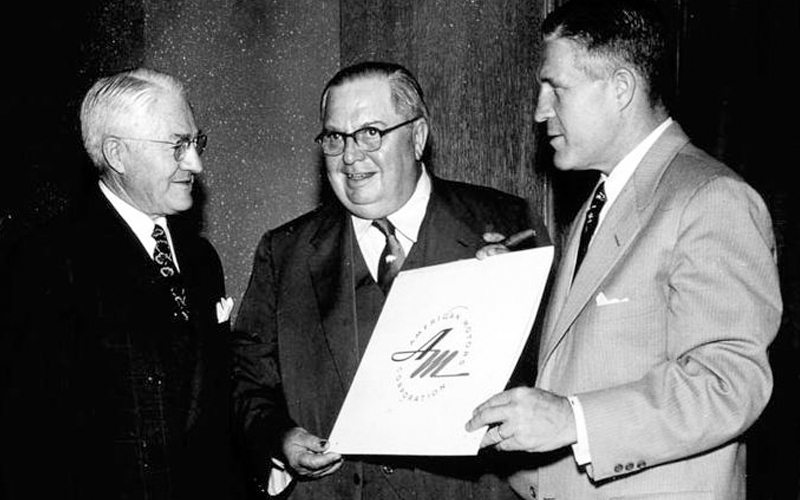
The original plan for the American Motors Corporation involved two other car companies, Studebaker and Packard. The first step was to have Studebaker and Packard merge into the Studebaker-Packard Corporation (S-P) and then have them merge into AMC. Despite the successful Studebaker and Packard merger, AMC and Studebaker-Packard remain separate due to management differences. Still, AMC and S-P committed to purchasing product from one another, but S-P didn’t hold up their end of the bargain. AMC would only utilize S-P’s pricey engines and transmissions in their Nash and Hudson models for two and a half years before eventually cutting ties and building in house.

American Motors went on to sell vehicles under both the Nash and Hudson brands. The Nash Rambler and Metropolitan were rebadged as Hudson models and Hudson’s own designs were skewed to more closely match that of Nash. Models like the Nash Statesman and Ambassador were cosmetically restyled and renamed the Wasp and Hornet under the Hudson brand, but featured their own brand specific engines. In 1958 the separate Nash and Hudson brands were dropped in favor of the top-selling and well recognized Rambler brand.

The Rambler brand would focus on being America’s fuel-efficient compact car brand while the Big Three were focusing on larger, less efficient models. Their lineup consisted of the Rambler American, Rambler Six, Rambler Rebel V8, and the Rambler Ambassador. The Ambassador was the largest of the bunch coming in at 200 inches in length and dwarfed by models like the Cadillac Series 70 Eldorado Brougham, with a length of 216.3in. That’s over a foot of difference between Rambler’s largest car and one of Cadillac’s smallest.
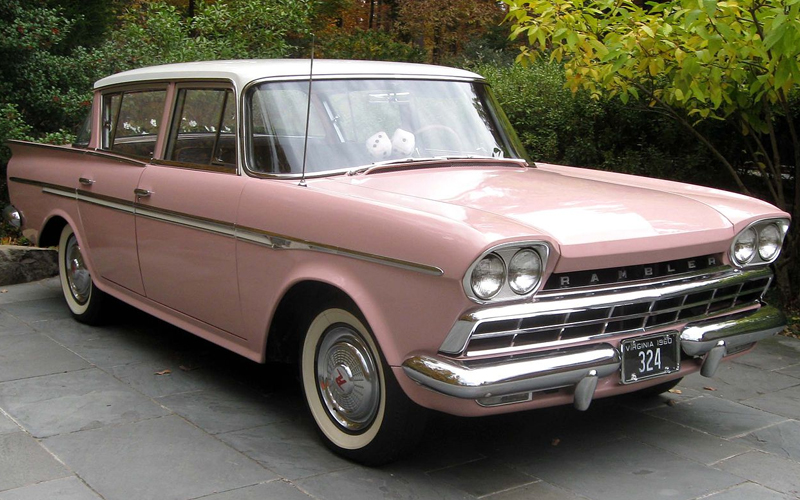
1960 Rambler Six – IFCAR on wikipedia.org | Shop AMC Ramblers on Carsforsale.com
The economy class styling of the Rambler car line made them affordable for the consumer and created good sales numbers for the 1950s. In 1959, AMC brought in designer Dick Teague who had previously worked for the likes of GM, Chrysler, and Packard. Teague would become the lead designer going into the 1960s and be tasked with spearheading designs for an innovative new era for AMC.
From Basic to Luxury to Hip
AMC became a leader in vehicle innovations that the Big Three would take years to even recognize or utilize until mandated by the Federal Motor Vehicle Safety Standards. Their tandem master cylinder was a standard safety feature that allowed their vehicles to still stop even in the event of a brake failure. They innovated the automatic shift pattern to park, reverse, and neutral prior to standardized drive positions, which wouldn’t become a mandatory until 1968. They were also one of the first manufacturers to offer disc brakes standard on some of their models, something that the Big Three wouldn’t offer for most of their models until forced to by government regulation. Plus, can you think of any car today that doesn’t have reclining front seats? Well, AMC’s models came with dual front reclining seats as a standard feature. Meanwhile, the Big Three were still producing stiff chairs and bench seating.
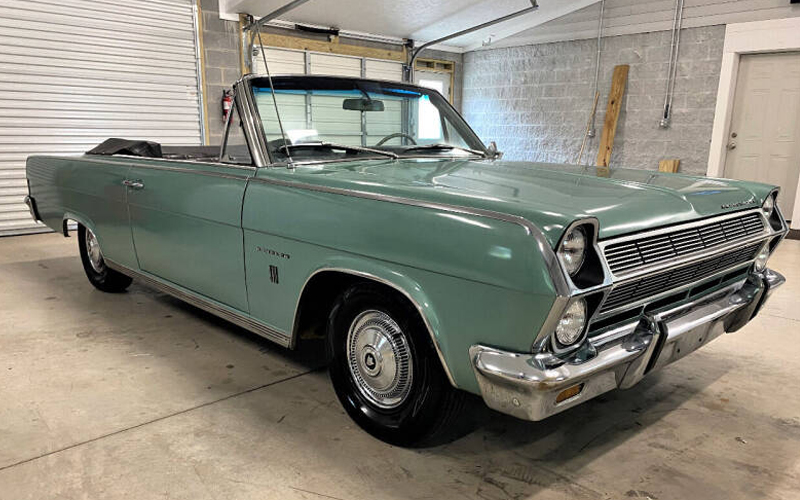
1965 Rambler Ambassador – carsforsale.com | Shop AMC Ambassador on Carsforsale.com
AMC’s Rambler models were among some of the best-selling in the early 1960s, but the company wanted to shift its strategy as mid-end and luxury vehicles became more popular. Their new strategy was to continue producing economical Rambler vehicles while offering the option to trade up into one of their new pricier luxury models. As a result, the Ambassador’s design got longer and received a convertible option.
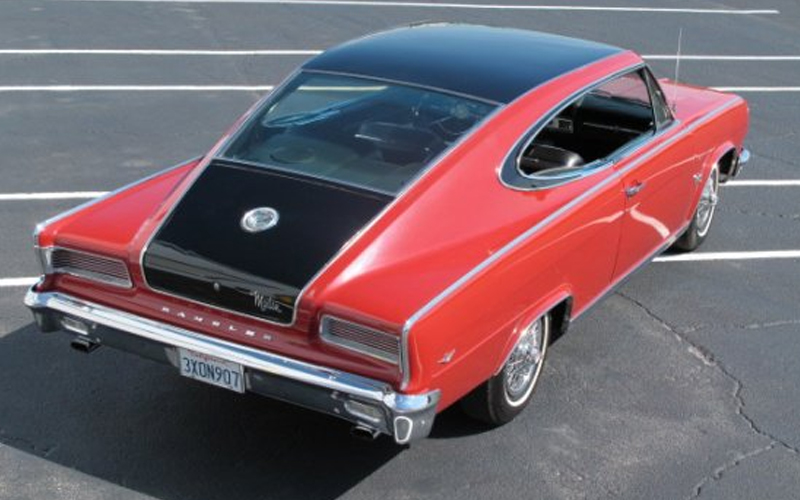
AMC would also introduce the Marlin in 1965, a personal-luxury fast-back, as a rebuttal to the sporty Mustang and Barracuda launched a year earlier. The Marlin reached for a niche of buyers looking for the sporty fast-back design, while also providing a comfortable and roomy interior; something Ford’s and Plymouth’s models lacked. They also marketed the Marlin as being in a limited supply, urging customers to visit showrooms to see the available models in person at dealerships.
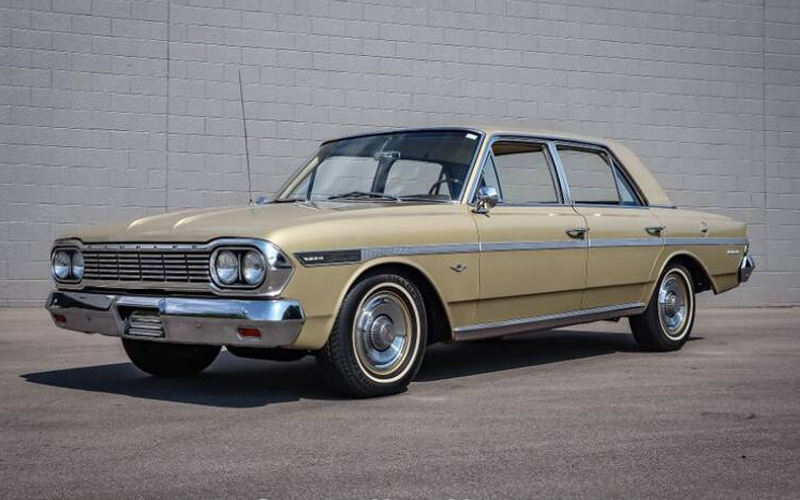
1964 Rambler Classic 770 – carsforsale.com | Shop AMC Ramblers on Carsforsale.com
The Ambassador and Marlin would eventually be badged as AMC, separating them from the Rambler’s budget brand reputation. While their plan to increase sales in the luxury market was panning out with the continually updated Ambassador, their flagship Rambler American’s sales began to dwindle and leave a hole in revenue that the Ambassador couldn’t fill. This decline in profits led to a new CEO taking control.
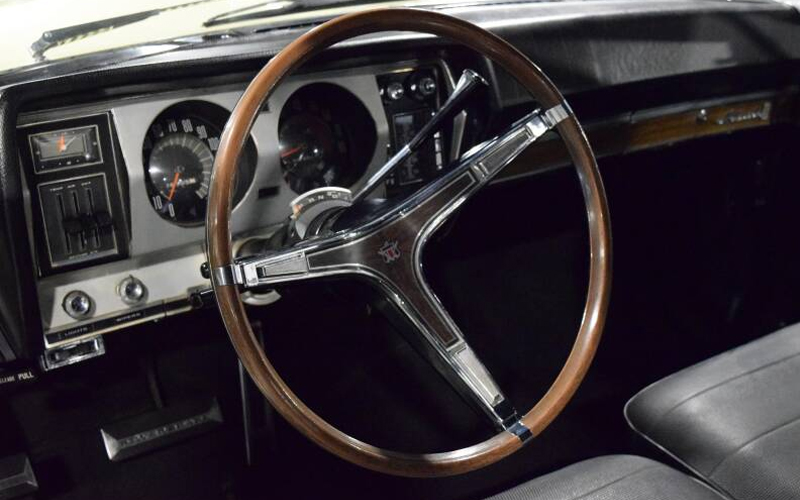
Roy D. Chapin Jr., son of Roy D. Chapin, founder of Hudson Motors, made large strides to reach a younger demographic and revive AMC’s sales. He slashed the price of the Rambler American to be competitive with the Volkswagen Beetle. Roy went on to make air conditioning standard on all Ambassadors, rare for even luxury cars of the day. Then came the moment we’ve been building towards, the formation of American Motors Experimental operations, otherwise known as AMX.
AMX and Javelin
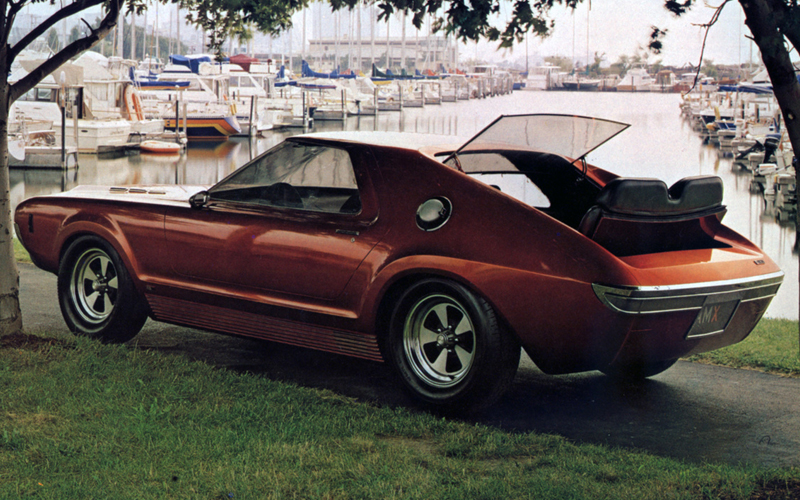
AMC began AMX in 1965 as a nameplate to distinguish their concept vehicles at car shows and help change public perceptions of their brand. The first designs were the AMX and AMX-II, both targeted towards a younger demographic. The AMX was a short two-seat muscle car featuring a decklid and rear window that flipped out as a rumble seat they referred to as a Ramble Seat. If you don’t know what a rumble seat is, picture a car with exterior seats just sitting outside the vehicle where you’d normally find the trunk.
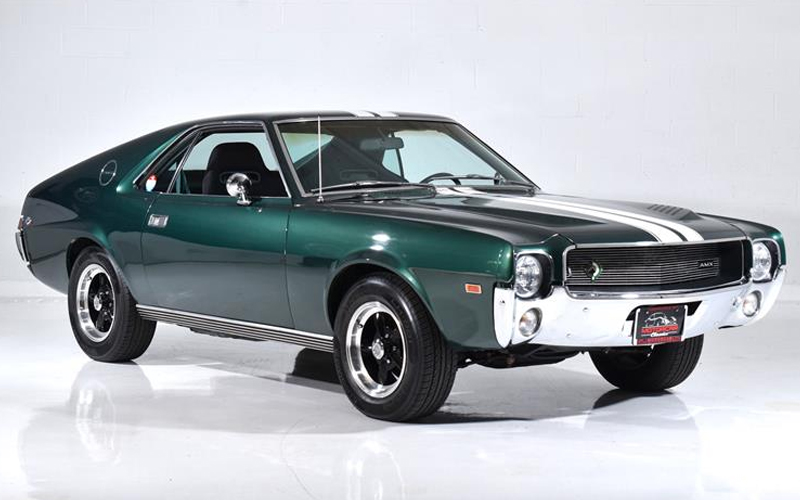
1968 AMC AMX – carsforsale.com | Shop AMC AMX on Carsforsale.com
This two-seater concept would eventually hit showroom floors in mid-1968 under the name AMC AMX. It wouldn’t feature the Ramble Seat, but still made a huge impact as one of a very few two-seater sports cars on the market. The AMC AMX debuted after proving itself by breaking 106 speed and endurance records at Goodyear’s test track in Texas. The AMX went on to see multiple special editions and become a dragstrip phenom. Despite these successes, it was discontinued after 1970 leaving the AMX name to be used for limited editions and concept vehicles.
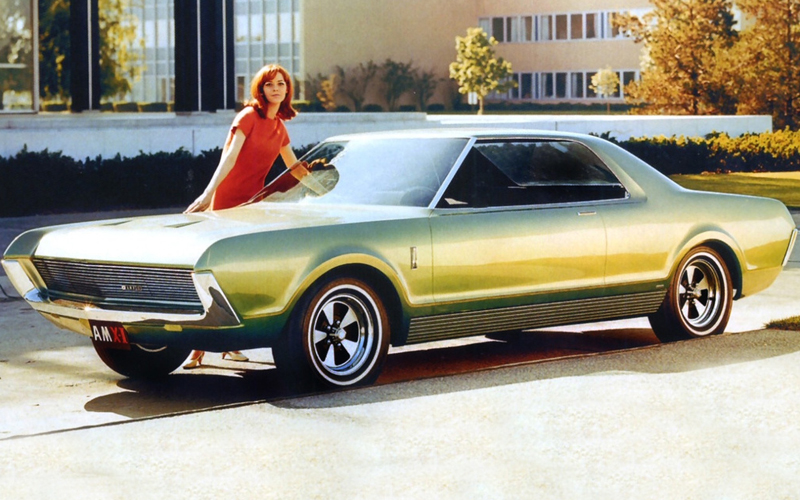
Following the first concept was the AMX-II. It was a four-seater fastback muscle car concept with similar styling to the prior AMX. While it lacked the attention-grabbing gimmicks of the first concept, it did feature some of its own nifty ideas. These included a full horizontal grille that concealed the headlights behind moving panels, multicolored taillights that showed when the driver accelerated, slowed, and stopped (similar to traffic lights), and doors that lock when the engine is started, a simple safety measure we hardly notice today. The AMX-II’s design garnered enough interest to encourage AMC to follow through with a production model. The AMX-II would be fast tracked by Dick Teague and his design team into the first-generation AMC Javelin.
The First-Generation Javelin
Dick Teague was given the task of designing cars that could compete with the Big Three, while having a much smaller budget to work with. So, when he was given the AMX-II concept and asked to make a production model from its design, some corners had to be cut. Their competition was able to provide both fastback and notchback iterations of their pony cars, but Teague cut costs by having a semi-fastback design that married the two body designs together and differentiated itself from competitors.
Teague also had to remove some of the fun ideas that showed up on the front and rear of the concept vehicle. The horizontal grille was replaced with a twin venturi styled grille featuring a recessed honeycomb pattern with the Javelin badging within the left opening. The hidden headlights were gone and instead the headlights moved to the top corners with the indicator lights found directly below inlaid into the chrome bumper. The multicolored taillights were replaced by a horizontal red bar that wrapped the car’s corners with the rear bumper and had the Javelin badge centered within it.
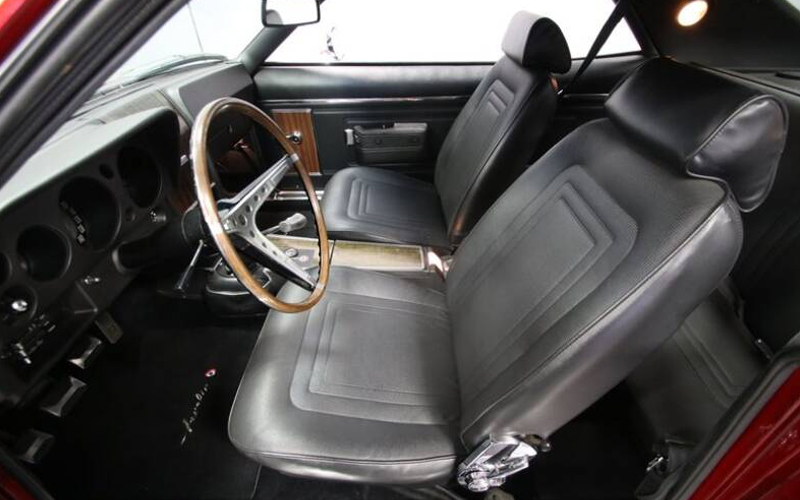
The windshield was slanted at a 59-degree angle to further perpetuate the sporty styling and the hood of the vehicle featured long twin air scoops (non-functional, however). Inside the vehicle there was more room than the Mustang, front bucket seats, rear bench seat, instruments recessed into the padded dashboard, a centralized radio, and carpeted flooring. In the SST trim they added a sports-styled steering wheel, simulated wood trim, and added the luxury of reclining seats.
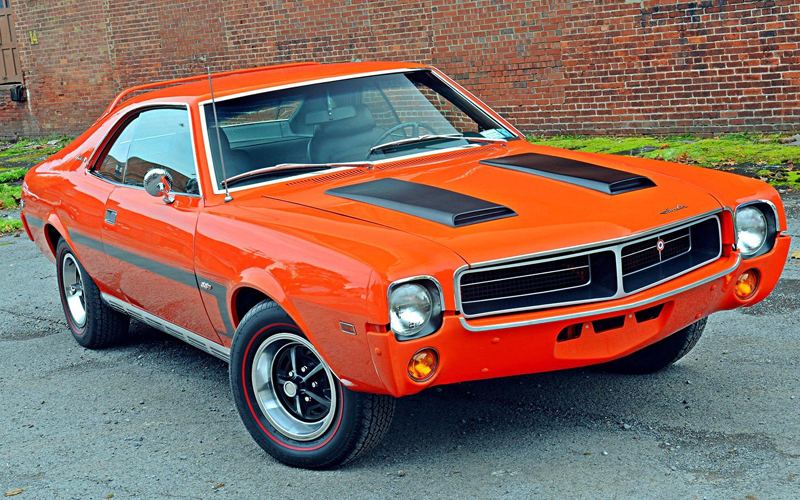
1969 AMC Mod Javelin SST – @JeffMG68 on Twitter | Shop AMC Javelin on Carsforsale.com
The AMC Javelin would offer only the base and their luxury SST for trim levels while featuring 13 basic color options and 3, now considered rare, brightly colored “Big Bad” options. AMC’s Go Package opened plenty of extra performance options from race stripes and spoilers to larger engine options and performance disc brakes, allowing customers to build out their Javelin how they wanted. Here’s what you could find for the first-generation Javelin:
- Engine options
- 232 2.8L I6 with a one- or two-barrel carburetor
- 290 4.8L V8 with a two-barrel carburetor
- 343 5.6L V8 with a two- or four-barrel carburetor
- AMX mid-1968 release – 390 6.4L V8 with a four-barrel carburetor
- 1970 – 232 3.8L I6 with a one- or two-barrel carburetor
- 1970 – 304 5.0L V8 with a two-barrel carburetor
- 1970 – 360 5.9L V8 with a two- or four-barrel carburetor
- 1970 – Go Package cold ram-air induction system
- Transmission options
- 3-speed manual transmission
- 4-speed manual transmission
- 3-speed automatic transmission
- 3-speed Shift Command transmission that acted as a 3-speed manual or final drive acted as an automatic.
- Body modifications
- Vinyl-covered roof options
- Various stripe kits
- 1969 Breedlove roof spoiler
- 1969 black dual hood scoops
- 1969 simulated exhaust rocker skirt trim
- 1969 painted bumpers
- 1970 Mark Donahue ducktail spoiler
- 1970 Power Blister dual hood scoops
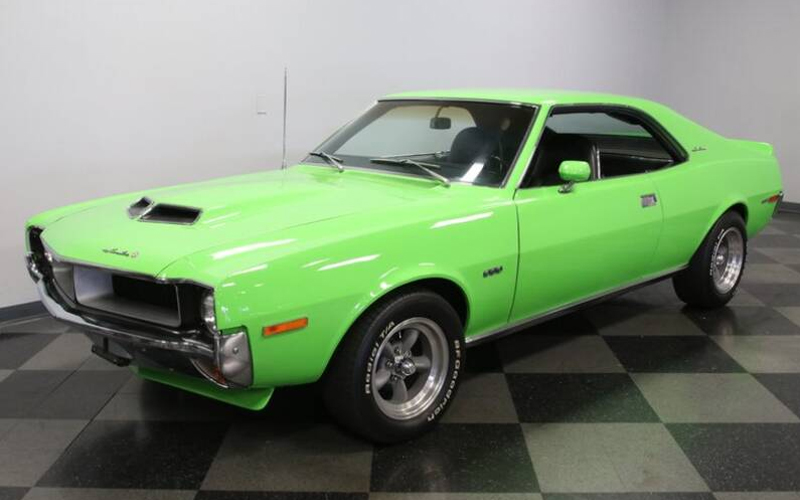
The AMC Javelin also had a range of factory approved performance upgrades called Group-19 that were dealer installed at the customer’s request. At a starting price of $2,700, the style and performance options of the Javelin were made even more appealing with its low price point. The average age of its first 1000 purchasers in 1968 was 29. AMC expected to only make 40,000 Javelins in its first year but were pleasantly surprised with its market appeal and produced 55,125 to meet demand. AMC’s Javelin was entered into drag racing and Trans-Am series racing events as a marketing push to gain more public interest in their model. It did well and podiumed numerous times, proving itself against the Big Three’s heavily financially backed racing teams but wouldn’t see a noteworthy first place success until its standout redesign following 1970.
The Groovy Second-Generation Javelin
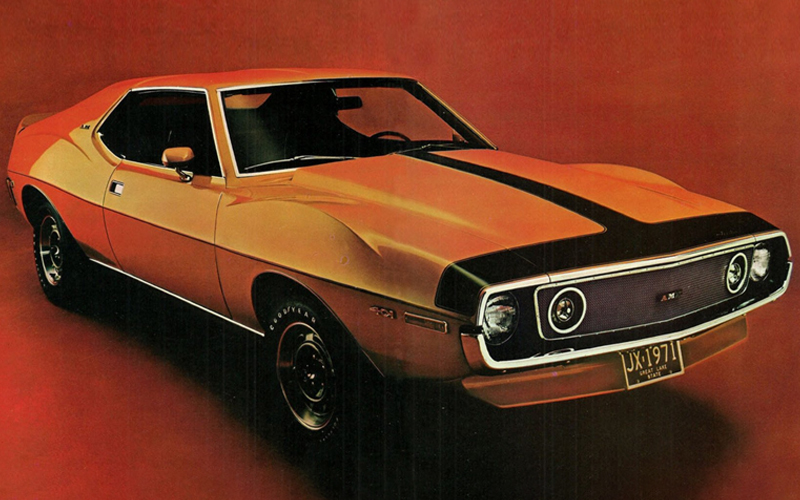
1971 AMC Javelin AMX advertisement – @DaveDuricy on Twitter | Shop AMC Javelin on Carsforsale.com
As with most of the cars of the pony car era, the 1970s triggered a need to redesign and make the AMC Javelin separate from the pack. Dick Teague and team once again took to the design of the Javelin and made something so unique that customers were forced to either love it or hate it. The body design was heavily influenced by racing and looked nothing like the competition.
The second-generation Javelin was made longer while the wheelbase only extended one inch farther than the previous generation, forcing the nose of the car out well past the front wheels. At the front, the twin venturi grille was replaced by a chrome accented injection molded grille that encompassed the headlights and the indicator lights, which had moved upwards into the new grille design. It incorporated large sculpted fender bulges that rose above the line of the car. These bulbous fenders helped accommodate the wheels with the Javelin’s now lowered stature.
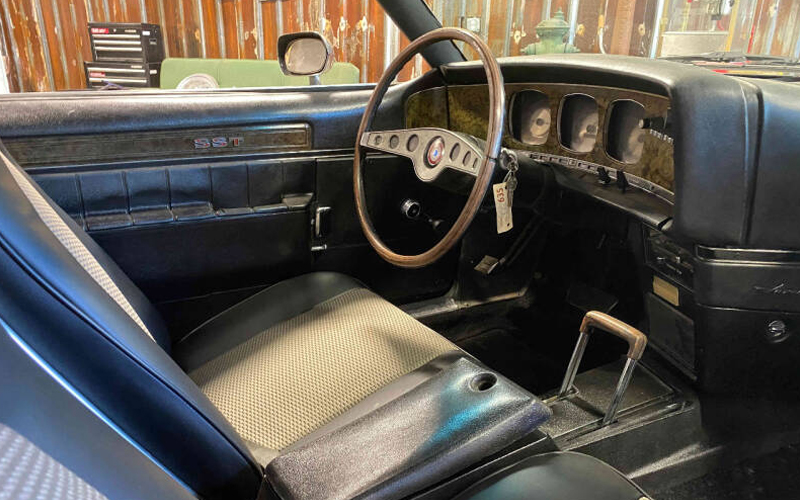
Up front, gauges warped behind the steering wheel and encompassed the driver, making the driver’s seat feel like a racing cockpit. The dashboard takes a hard angle from the driver that goes dramatically away from the passenger creating an asymmetrical interior look not typical of AMC’s past ventures.
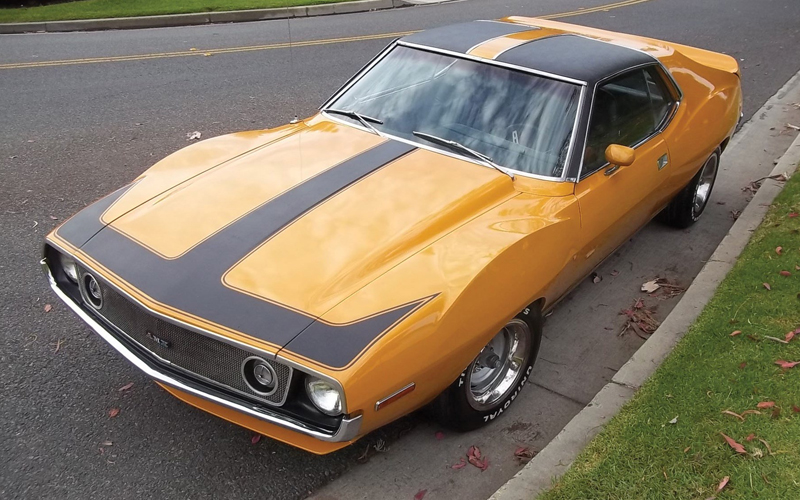
The AMC AMX ended in 1970, but the name carried over to the Javelin AMX. This trim level gave the Javelin racing inspired upgrades advertised as “the closest you can come to owning the Trans-Am Champion.” The Javelin AMX added a fiberglass full-width cowl induction hood, stainless steel mesh screen over the grille’s opening, and a rear spoiler adding 100lbs. of downforce.
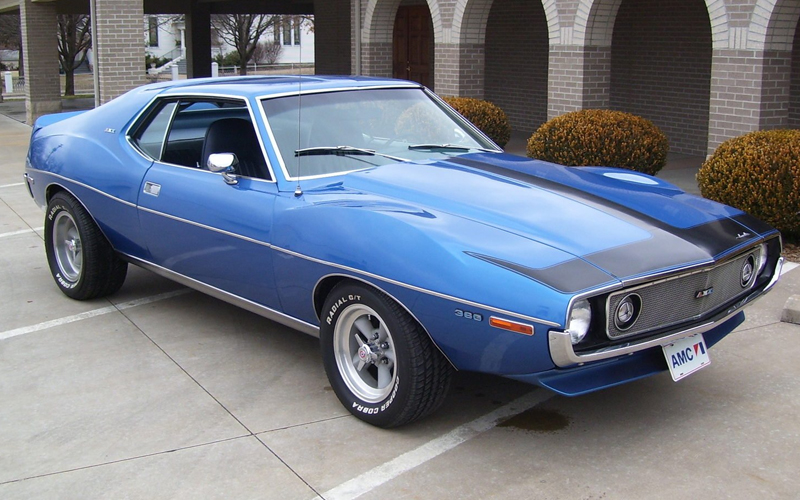
The AMC Javelin AMX was unlike anything else on the road. This wasn’t just a design overhaul; it was a performance one. The AMC Javelin AMX introduced a 401 6.6L V8 with a 4-barrel carburetor with a forged steel crankshaft and robust connecting rods. With this engine, the Javelin ran in the mid-14 seconds in the quarter mile. AMC continued improving their available engines and hosted multiple performance options including ones found in the returning Go Package. The Go Package featured Rally-Pac instruments, improved handling, Twin-Grip limited-slip differential, performance cooling, and power-assisted disc brakes as well as its iconic T-stripe decal along the hood.
AMC was doing everything they could to make a vehicle that would turn profit, while working with less capital than their competitors. A new way they continued to keep customers interested was their Buyer Protection Plan warranty that backed all their products. For up to one year or 12,000 miles, AMC promised to fix anything wrong with customers vehicles, aside from tires, which was an industry first that we see everywhere today. Next was proving their car on the track.
Penske Racing and Mark Donahue worked as a team with AMC to make a winning Trans-Am race car. They were the racing minds behind the late 60’s podiums and gave their input into what could help the performance of the Javelin, eventually leading to the second-generation design and the AMX trim. The second-generation AMC Racing Javelins went on to win not just one but three Trans-Am racing championships in 1972, 1973, and 1976.
Not All Underdogs Win in the End
The racing wins, redesigns, the AMX, and special editions just weren’t enough to keep the Javelin a competitor with the Big Three. Nearing the 1974 model year, the Javelin just wasn’t a strong contender going against the likes of the new Ford Mustang II, Chevrolet Camaro, and Pontiac Firebird. Along with the economic crisis, low sales, and the declining popularity of pony cars, the NHTSA bumper standards of 1974 hit AMC who didn’t have the finances to redesign a legal bumper for the Javelin.
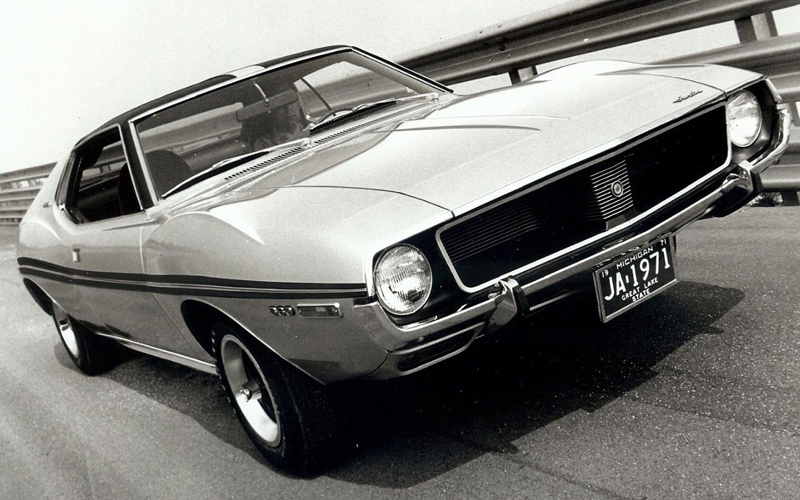
AMC discontinued the Javelin after 1974. Their most noteworthy model in racing and one of the most unique pony cars of the era was replaced by the economy driven models of the AMC Matador and their newly developed compact AMC Pacer. In 1978, European auto manufacturer Renault made a joint manufacturing agreement with AMC that eventually led to Renault acquiring a majority stake in AMC. Eventually, AMC regained a majority, renamed themselves American Motors, and went on to produce models like the Eagle and utilize the Jeep brand for models like the Wrangler and the Scrambler. Sadly, the company would be consumed by Chrysler and incorporated into their new Jeep-Eagle division in 1987.
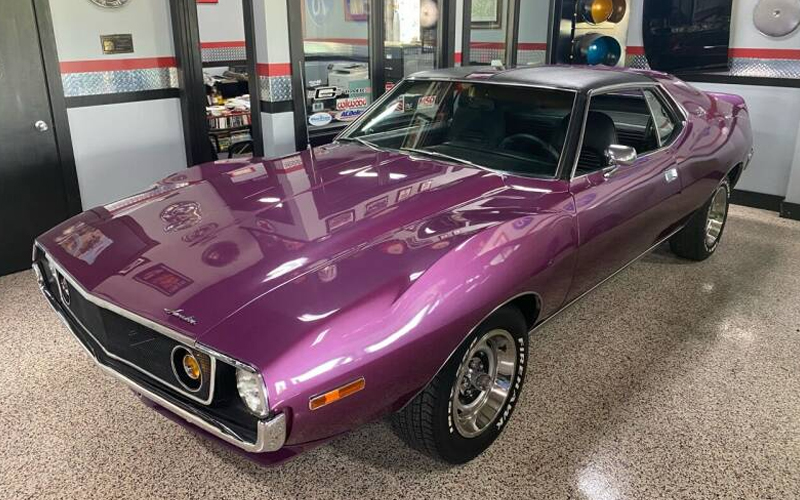
1972 AMC Javelin SST – carsforsale.com | Shop AMC Javelin on Carsforsale.com
AMC had a tough run, but their legacy lives on. AMC Javelins, AMXs, Pacers, and Rebels can be found at ridiculously low prices in comparison to Mustangs and Camaros of similar vintage. You can find them in running collectors’ condition, in some cases for less than $20,000. Plus, pulling up in an AMC brings plenty of attention. The Javelin still stands out from the Big Three’s classic muscle cars, just as AMC intended.


